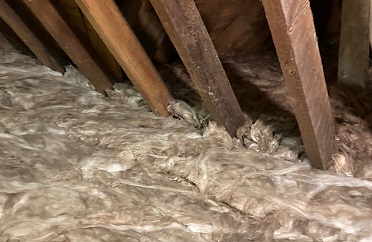
Good insulation – Top of the ‘must have’ list
March and April are traditionally good months in the property industry as they are the first main selling months of the year. Many new properties come on the market and many prospective buyers are keen to snap up a great purchase. As fuel prices begin to soar, an increasing number of buyers have placed ‘good insulation’ on top of their ‘wish list’ because as fuel prices start to rise dramatically they know that poor insulation will cost them dearly. They also appreciate the increasing importance of being energy-savvy.
There are five red flags to check when you are viewing a property that will indicate that the house is not well insulated. These are well worth checking so that you can be confident that the house you are buying is both well insulated and energy-efficient. These same five red flags are equally important for house sellers to address if they want to sell their property quickly and for a good price.
1. How do I know if my house has cavity wall insulation?
Houses built after the 1930s usually have cavity walls. The external walls comprise two layers of brickwork with a small gap in between which is filled with insulating material so that warmth from rooms inside cannot escape through the walls and be lost. Cavity wall insulation is an effective way to insulate a home and reduce fuel bills.
You can tell if a house has cavity wall insulation by studying the brickwork outside. If the rectangular bricks have been placed one after the other with their long side showing, the house has cavity walls but if the bricks have been placed in an alternating pattern with both long and short sides showing, this indicates the house has solid walls.
If you are viewing the property on a cool or rainy day, the inside walls should feel warm and dry to touch.
Good cavity wall insulation is essential as up to 35% of heat is lost through the walls. With good insulation, the average-sized detached house can annually save £245 on its heating bill so the insulation will pay for itself in just a few years.
If you are planning to sell your house, it is essential that it has efficient cavity wall insulation as you may well find it hard to sell otherwise. Having cavity wall insulation installed takes just a few hours and is simple, mess-free – and surprisingly affordable too.
2. Does the house have good loft insulation?
As much as 25% of a home’s precious heat is lost through its loft if it is not adequately insulated. Loft insulation should be at least 125 mm thick to be effective and makes a huge difference to heating bills. It is quick and easy for experts to fit in and will last up to 40 years. House buyers should check that the loft insulation is of the required thickness and is in good condition. Only 38% of houses in the UK have adequate loft insulation, so if you are planning to sell your house this season, it is best to check that your loft does.
3. Are the windows double or treble glazed?
It is well worth spending some time checking the state of the windows. If you can push your finger easily into a wooden window frame, this shows that the wood is rotten. If the windows are double glazed but there is condensation between the panes this indicates that the double glazing has failed. If the glazing is relatively new, the house owner should have a certificate showing that it was installed by an approved company and their work guaranteed.
4. Are there tell-tale signs of damp or condensation?
Take your time to walk around the rooms and smell each one carefully as you can often smell dampness more easily than see it – especially if the house vendor has painted over damp patches or cracks or has strategically placed some furniture to hide them.
Dampness has a very distinctive musty smell and can usually be spotted near the ceiling or close to the skirting boards. Even if the house has cavity wall insulation, there can be problems when it gets older especially if damp has managed to find its way in through cracks in the outer brickwork. The only way to establish what is causing the problem is to arrange an inspection by a specialist.
5. Has the property got a current EPC?
Whether you are buying or selling a house in the UK, it is a legal requirement that it has an Energy Performance Certificate which is valid for ten years. It is the vendor’s responsibility to ensure that they have one before placing their property on the market.
An assessment is made of the property and floor and wall areas are measured. The property’s heating system is inspected, cavity wall insulation identified and loft insulation checked as well as all energy-efficient products such as light bulbs. The Energy Performance certificate is colour-coded from Green Class A- the most energy efficient- to Red Class G which denote the least energy efficient. The average energy efficiency rating is Band D. If you are planning to sell your house it is well worth following the advice given with the certificate on how to improve your property’s energy efficiency. Once things have been rectified, you can apply to be assessed for a new EPC.
Whether you are planning to buy or sell a property in 2022, be energy-savvy as it will pay dividends.
